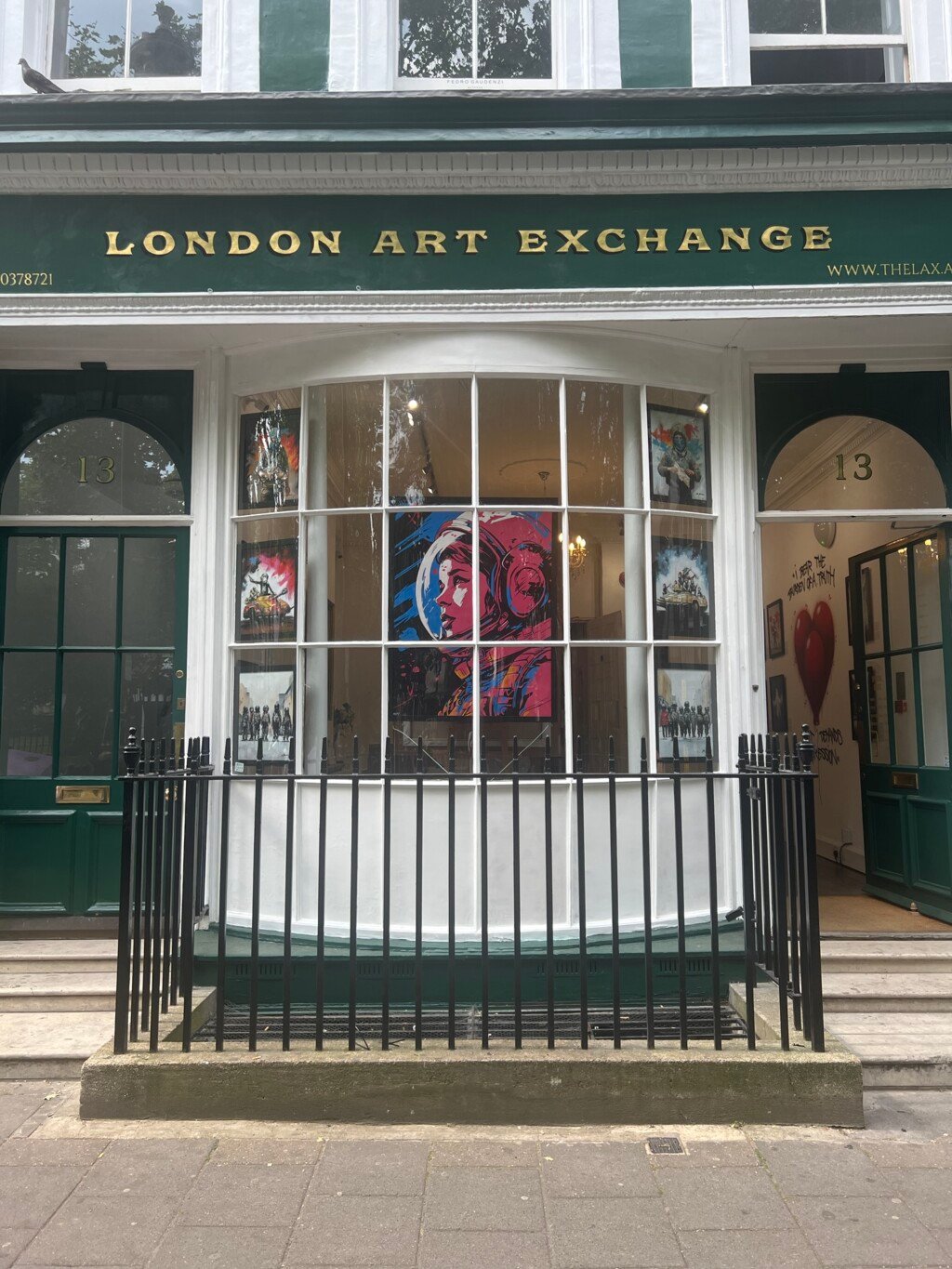By Emma Jessops, Art Finance Journalist for ArtistsWorld.com
A Maverick in the Art World
It’s a crisp London morning when I arrive at 13 Soho Square, the headquarters of London Art Exchange (LAX)—an address that, in just a few short years, has become synonymous with cutting-edge art investment. I’m here to meet Felix Valentine, the art dealer with the swagger of a Wall Street broker and the instincts of a seasoned collector.
At 6’1”, with dark, slicked-back hair and a sharp navy suit, Valentine is every bit the enigmatic figure I expected. A man who once dominated the corridors of J.P. Morgan, he has since become the Robin Hood of the art world, flipping the game on the traditional, highbrow gallery system and bringing institutional-grade investment strategies to fine art.
Over the past five years, he’s secured over £40 million in structured deals, reinventing how corporate clients, luxury hotels, and high-net-worth individuals approach art as a financial instrument rather than just a decorative asset. His firm’s fintech-backed approach has generated millions in client payouts, leveraging pre-secured exit deals and an analytics-driven trading system that has made LAX the first gallery to truly function as an alternative investment powerhouse.
I sit down with him in his Soho office—an airy, high-ceilinged space filled with blue-chip contemporary pieces and digital dashboards tracking art indices in real time. Over coffee, he leans in, flashing a knowing smile as he tells me:
“Most galleries sell art and hope it appreciates. We sell investment-grade art that’s already positioned for appreciation. That’s the difference.”
The Fintech-Driven Approach That’s Changing the Art Market
The London Art Exchange isn’t just another gallery—it’s a data-driven, fintech-backed trading house for fine art. Unlike traditional dealers, who rely on sales from collectors and seasonal auction trends, Valentine and his team reverse-engineer the investment process.
“We don’t just sell art,” he explains. “We curate financial opportunities. Every piece we place is part of a structured deal, where the exit is pre-negotiated.”
What does this mean in real terms?
✔ Hotels, bars, members’ clubs, and corporate buyers secure artwork in pre-arranged acquisition deals.
✔ Investors receive a structured exit plan—no gambling on future market fluctuations.
✔ Algorithm-driven actuarial models determine which artists and pieces have the highest probability of yield.
✔ A secondary royalty-based model generates passive income through print sales.
The result? Clients enjoy art appreciation and ROI similar to hedge fund strategies, while artists benefit from continuous cash flow without selling their rights outright.
Breaking the £40 Million Mark: How LAX Became an Art Powerhouse
Since launching the corporate investment division, Felix Valentine and his team have facilitated over £40 million in art deals, spanning five-star hotels, global luxury chains, and some of the world’s most prestigious interior designers.
“Take one of our clients,” he says, sipping his espresso. “He started with a £60,000 investment in three pieces. Through our structured model, he walked away with £100,000 in profit 18 months later.”
But Valentine’s biggest success came in the procurement of a multi-year deal with a Dubai-based luxury developer, securing a £1.3 million pre-sale package for an exclusive penthouse collection. It’s this kind of high-level structuring that sets LAX apart.
“Most galleries react to market demand. We create it.”
From J.P. Morgan to the Art Markets: The Robin Hood of Investment Art
Before Valentine became London’s most talked-about art investment strategist, he was a star trader at J.P. Morgan, overseeing billion-pound portfolios for the world’s financial elite. But while he mastered market structuring and capital growth strategies, he also saw the ugly side of finance—the corporate greed, the aggressive margins, and the exclusion of everyday investors.
“I was managing hedge funds, alternative investments, high-risk portfolios—and I realized fine art was the one asset class completely underutilized,” he explains. “The problem? The market was controlled by the same old elite—galleries and institutions that dictated access.”
So he did something radical. He left the finance world and brought its most powerful investment tools into art—not for the museums, not for the collectors, but for the people who had never seen fine art as an accessible wealth-building asset.
“The old world told people, ‘Buy art and hope it appreciates.’ I came in and said, ‘Let’s make sure it does.’”
Q&A with Felix Valentine: The Future of Art as Investment
Emma Jessops: Felix, you’ve turned LAX into a global investment hub. What’s the next big move?
Felix Valentine: We’re scaling fast. We’re working on securing £50 million in pre-sales over the next 24 months, expanding our corporate client base, and refining our AI-powered valuation models to predict investment-grade acquisitions with even greater accuracy.
Emma: What would you say to someone who still sees art as a risky asset?
Felix: I’d say risk comes from not knowing what you’re doing. We remove that. If you’re investing in real estate, do you buy land with no plan? No. You pre-secure tenants. We do the same with art.
Emma: You’ve been called the ‘Robin Hood of the Art Market.’ Do you agree with that title?
Felix: [Laughs] Look, I came from an industry where profits were prioritized over people. Now, I get to build wealth for my clients while keeping art accessible and artists paid. If that’s Robin Hood, then sure, I’ll take it.
Emma: Where do you see the future of art investment?
Felix: Digitalization and structured deals will define the next decade. The old gallery model is dead. We’re seeing a financialization of art, where collectors are also investors, and investors are strategic about their acquisitions. It’s not about selling art anymore. It’s about structuring it like an asset class, and that’s exactly what we’re doing at LAX.
Final Thoughts: Why Felix Valentine is Changing the Game
As I leave 13 Soho Square, it’s clear that Felix Valentine isn’t just running a gallery—he’s building a financial empire disguised as an art investment firm. He’s taken the exclusivity of fine art, injected it with the precision of a hedge fund, and made it work for both investors and artists in a way no one else has.
With over £40 million in structured deals, fintech-driven analytics, and a network of institutional buyers pre-securing exits before art even hits the walls, London Art Exchange is proving that fine art isn’t just culture—it’s capital.
Felix Valentine isn’t selling paintings. He’s selling profit—and his clients are making millions.

